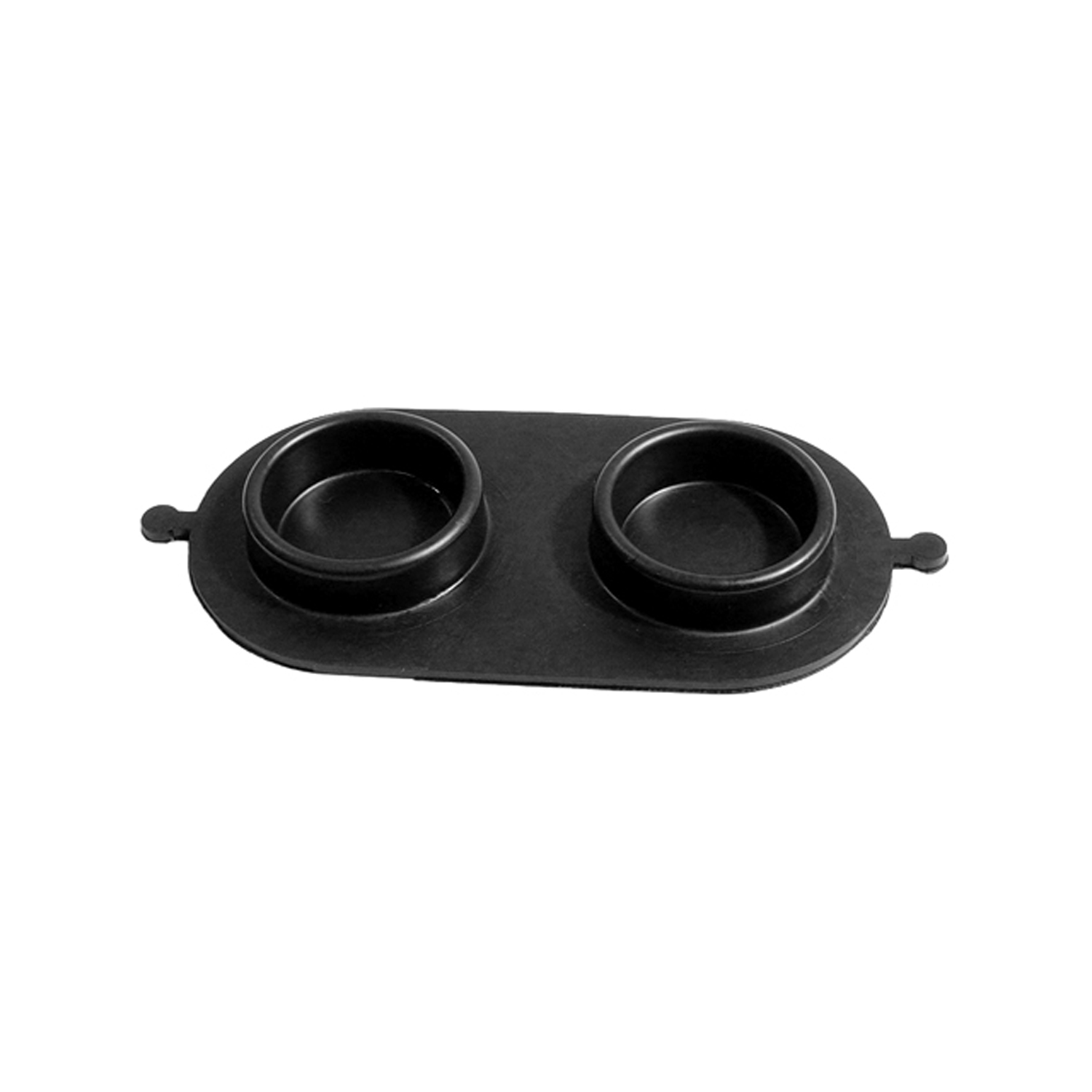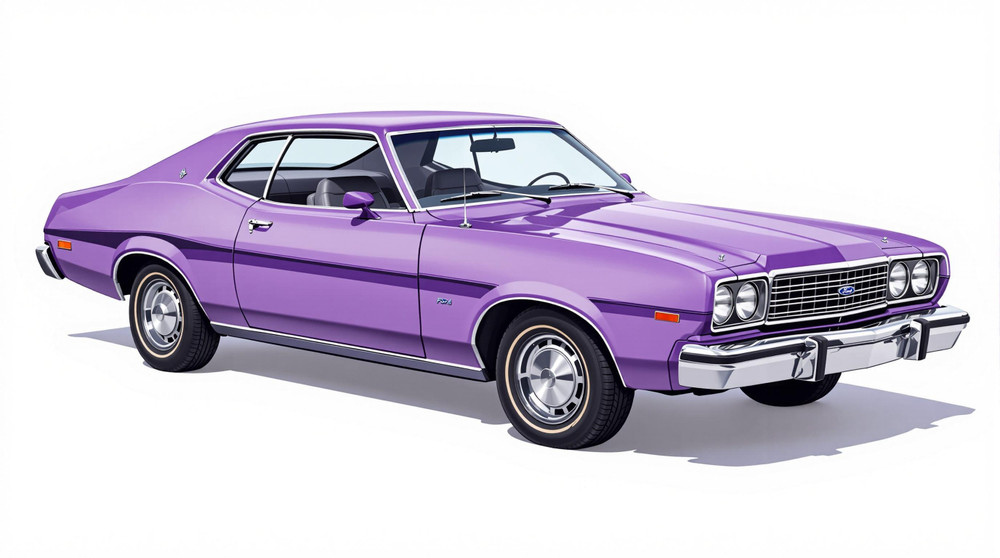Image of 1975 Ford Pinto, Note: These illustrations use artistic license and may differ from actual historical models.
Performance Metrics
Fundamental Metrics
Emotional Appeal
MMP Rating
| Engine Specifications | |
|---|---|
| Engine Options: | 2.3L I4, 2.8L V6 |
| Displacement Range: | 140-171 cu in. |
| Horsepower Range: | 88-105 hp |
| Torque: | 120-145 lb-ft |
| Compression Ratio: | 8.4:1 (I4), 8.7:1 (V6) |
| Ignition System: | Electronic |
| Cooling System: | Liquid-cooled |
| Performance Specifications | |
| 0-60 Time: | 11-13 seconds |
| 1/4 Mile Time: | 18-20 seconds |
| Top Speed: | 100 mph |
| Transmission and Drive | |
| Drive Type: | RWD |
| Transmission Type: | 4-speed manual, 3-speed automatic |
| Fuel and Efficiency | |
| Fuel System Type: | Carburetor |
| MPG: | 20-25 mpg |
| Dimensions and Brakes | |
| Brakes: | Front disc, rear drum |
| Wheelbase: | 94.2 in. |
| Weight: | 2,015-2,270 lbs |
Note: Specifications for classic cars are given to the best of our ability, considering the limited and variant data available.
1975 Ford Pinto: A Controversial Classic
The 1975 Ford Pinto stirs a mix of nostalgia and debate among classic car enthusiasts. Born in an era of automotive transition, the Pinto was Ford's answer to the growing demand for smaller, more fuel-efficient vehicles in response to the oil crisis of the 1970s. Despite its infamous reputation due to safety concerns, the Pinto has its place in automotive history, with a unique story that continues to fascinate collectors and historians alike.
One particularly intriguing fact about the Pinto is its role in changing automotive safety regulations. The Pinto's legacy is forever intertwined with the controversy surrounding its fuel tank design, which led to a landmark case study in corporate ethics and catalyzed more stringent safety standards for all vehicles.
Design and Innovation
The exterior of the 1975 Ford Pinto was characterized by its subcompact dimensions, sporting a long hood with a short rear deck—a design ethos that echoed the larger muscle cars of its time but on a much smaller scale. Its simple yet functional styling featured round headlights and chrome bumpers that gave it a distinct look reflective of the period.
Inside, the Pinto's interior was modest, with an emphasis on practicality over luxury. The quality of materials was typical for economy cars of the day, with durable plastics and vinyl upholstery being commonplace. Technologically, it wasn't groundbreaking, but it did offer features like an AM radio and heater as standard equipment, with air conditioning being optional.
Color options for the Pinto ranged from vibrant hues like "Bright Red" and "Grabber Blue" to more subdued tones such as "Saddle Bronze." The most iconic body style was arguably the three-door Runabout hatchback model, which offered both style and utility that appealed to a wide audience.
Historical Significance
The 1975 Ford Pinto's impact on automotive design may not be celebrated for innovation, but it is significant for highlighting the importance of safety in design. It set a precedent for how automakers and regulators approach vehicle safety, ultimately leading to improvements across the industry.
What set this car apart from its contemporaries wasn't just its compact size or fuel efficiency; it was also one of the first American cars that directly addressed the threat from imported subcompacts. The Pinto's influence can be seen in how domestic automakers approached small car design in subsequent years.
Performance and Handling
The performance of the 1975 Ford Pinto was modest by today's standards. Equipped with a range of four-cylinder engines, top speeds were adequate for daily commuting rather than high-speed pursuits. Acceleration from 0-60 mph was leisurely compared to modern vehicles but typical for economy cars of that era.
In terms of handling, drivers could expect a straightforward driving experience. The ride was generally smooth on well-maintained roads but could become unsettled over rougher terrain. The engine's hum was unobtrusive, providing a relatively quiet ride for passengers.
Ownership Experience
The Ford Pinto was primarily used as a daily driver due to its affordability and fuel efficiency. Maintenance and reliability were in line with other domestic offerings at the time; however, parts are now more scarce due to its age. For average owners who enjoy tinkering, many find that repairs can be straightforward due to the simplicity of the vehicle's mechanical systems.
Fun Facts
The Pinto has had its share of screen time in movies and television shows, often playing up its quirky character or infamous past. While not known for breaking speed records, it did achieve notoriety through media coverage related to safety recalls.
Criticism aside, there were special editions like the "Pony" package that added aesthetic touches such as stripes and upgraded interiors aimed at younger buyers looking for style on a budget.
Collector's Information
Today, the value range for a 1975 Ford Pinto can vary widely based on condition, originality, and history. Estimates suggest that hundreds of thousands were produced during its run; however, many have not survived to become collectibles. As such, well-preserved examples can command higher prices than one might expect given their controversial past.
In terms of appreciation or depreciation, it largely depends on the collector market's interest in unique or historically significant models rather than outright performance or luxury credentials.
Conclusion
The 1975 Ford Pinto remains an interesting chapter in automotive history. Its story serves as a reminder of how consumer demand and regulatory pressures can shape vehicle design and manufacturing practices. For those who own one today or are considering adding it to their collection, it offers an accessible entry into classic car ownership with plenty of conversation-starting potential at car shows or gatherings.
1975 Ford Pinto Catalog of Parts
 1975 Ford Pinto Brake Master Cylinder Cover Seal. Replaces OEM #C7AZ2167-A-RP 2-BBrake Master Cylinder Cover Seal. Replaces OEM #C7AZ2167-A. Each
1975 Ford Pinto Brake Master Cylinder Cover Seal. Replaces OEM #C7AZ2167-A-RP 2-BBrake Master Cylinder Cover Seal. Replaces OEM #C7AZ2167-A. EachWhy Choose Metro?
For over 100 years, Metro Moulded Parts has been the pinnacle of quality in classic car restoration parts. Our commitment to precision and authenticity in every component ensures a perfect fit and an OEM-level appearance.
- Expert Craftsmanship & Quality: Each part is a testament to our dedication to reliability and perfection, crafted from original designs and thoroughly tested.
- Advanced Technology: We use cutting-edge techniques to create flawless, long-lasting parts that surpass others in performance.
- SuperSoft Sponge – The Ultimate Door Seal: Not only are our door seals 30% softer than competitors', but they're also guaranteed to never leak. They effectively reduce wind and road noise, enhancing your classic car's comfort and driving experience.
- Proudly American: Our parts are a product of American craftsmanship, made in the USA with a spirit of excellence and heritage.
- Unrivaled Warranty: We back our products with a 30-year industry-leading warranty, a testament to our confidence in their quality.
Join us in preserving the legacy of classic cars with parts that are crafted for perfection, not just made.

